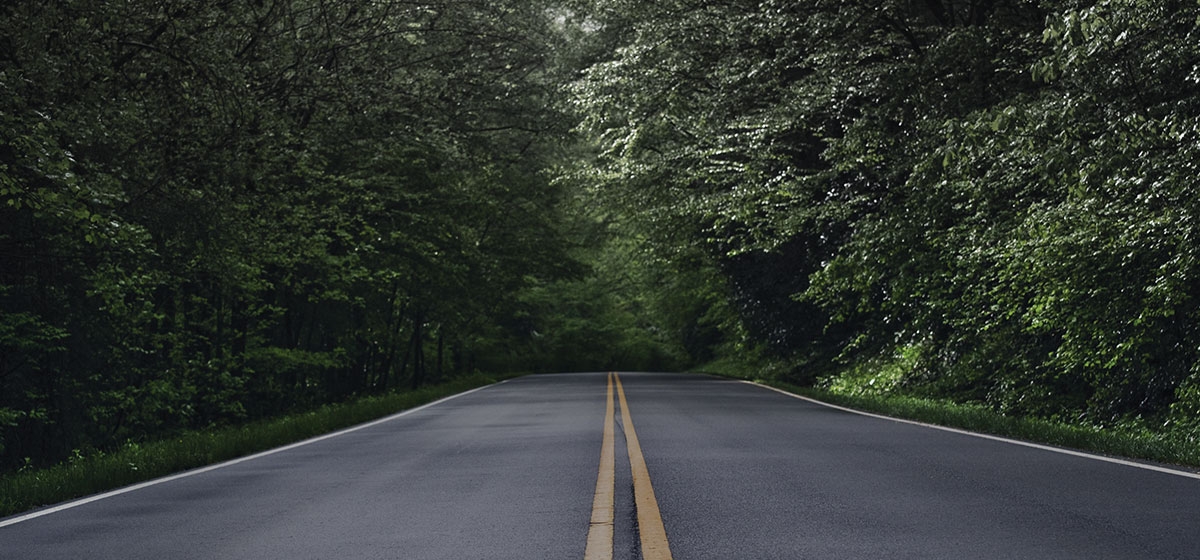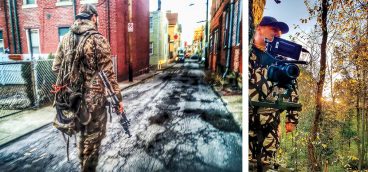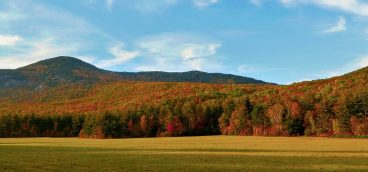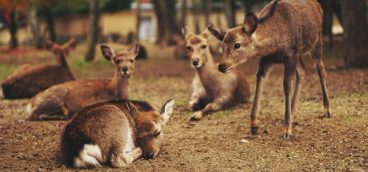On a Lonely Stretch of Road

I had occasion recently to pet a wild animal for the first time.
For 55 straight summers, I’ve visited Michigan’s eastern Upper Peninsula, but I’d never driven to its rugged, western side, which borders Lake Superior and Canada. Pittsburgh friends were celebrating the relaunch of an old family boat they’d restored, at the top of the Keweenaw Peninsula, which juts up into Lake Superior.
The six-hour drive led me past the exclusive, 25,000-acre Huron Mountain Club and its renowned fishing and hunting grounds, and farther northwest, up to tiny Eagle Harbor—at a latitude above Quebec City.
The trip was gorgeous—and when I drive through wild lands, part of the majesty is never knowing what you’ll see. On various trips, I’ve seen cougars, coyotes, wolves, moose and even a grizzly.
On the way back, I took a shortcut onto a back road my phone recommended. As I descended a long hill, I admired this absolutely straight byway which stretched for miles into the distance, like a line on a perspective drawing, a sliver of gray between pristine evergreens crowding both sides. For a few moments, the beauty of that scene at dusk created an indelible reverie.
Bang! I felt a jolt and something black shot across the road.
The front right wheel of my wife’s SUV labored and rasped. As I slowed the car, I figured I must have hit a small animal that had darted from the trees unseen. And by the wheel’s sound, I guessed I was dragging it. I stopped and backed up to dislodge what I could only imagine.
I walked around the back of the car and along the passenger’s side, looking to see what I had hit. But nothing was on the road or under the car but puddles of water. When I saw the front right fender, however, it was clear that whatever I’d hit was no rodent. The wheel was intact, but the fender was crumpled like a wad of paper. Water from the crushed windshield fluid container poured out, wires dangled, and the lining of the wheel well touched the pavement. Whatever I had hit was big.
With growing dread, I turned the car around in that fading light and drove back to see what might be back on the road. I scanned both sides, nothing. Then, on the left, just inside the tree line, I saw an enormous deer.
I pulled over, half on, half off the road. There it was, agitated, lying on its belly, and trying without success to crawl farther into the woods. I got out for a closer look. It was a big and beautiful buck—about 250–300 pounds. At first glance, he looked fine. No blood. Then I saw his left hind leg. It was sheared off, with just a hollow, white bone jutting out, and its entire lower leg and hoof dangling from a piece of still-attached brown hide.
I’ve never been squeamish, but the amputation was shocking.
What should I do? My first thought was to put him out of his misery—to kill him quickly. But with what? All I had in the car was a fishing rod and tackle box with a pocket knife.
I called a friend, apprising him of the situation and asking what he thought of using the knife. “No, no reason to get blood all over yourself,” he said. And it occurred to me that, even if I wanted to use the dull knife and cut his throat, his sheer size and likely panic would be too dangerous.
The deer was just 20 feet away, with his head turned, looking back at me. I was surprised that, despite his size, his antlers were just two straight poles, about four inches tall and covered with velvet. A young buck, I guessed, whose life I had ruined on that beautiful summer night, as the full moon rose above the tree line.
Very slowly, I walked over to him, speaking in a quiet and soothing voice. And he stopped writhing, watching me all the way. I continued to talk to him as I crouched and slowly reached out. Gently and tentatively, I petted his haunches, apologizing to him. I did this for a minute or two until it became clear, as the darkness grew and with my car half on this lonely stretch of road, that all I could do was leave him there. Which I did.
It was a long ride back to the eastern U.P. that moonlit night—three hours in good conditions— and even after rigging my car’s sagging parts with headlight wires so they wouldn’t drag, it was five hours thinking about that doomed animal.
The next day, two workers at the boat harbor where I park noticed my wrecked car. “Ouch!” one said, to which I replied, “Deer.” The other joked, “I hit a deer every year, but it’s never during deer season.” The harbor’s owner is an old friend, and I asked him what he would have done. “Well, I keep a tire iron in my truck, just in case. Better to put him out of his misery than to leave him to be eaten alive by coyotes or a wolf.”
That afternoon, my older brother said I had done the right thing by not killing the deer, that in his neighborhood he’s seen threelegged deer who get along fine. “If he could, that deer would have thanked you for not killing him.” I said, “Maybe you’re right. If I were in his position, I would rather take my chances at living than have someone decide for me.”
It was a nice thought that maybe the deer would survive and that I had done the right thing, not killing him. But I knew that that deer wasn’t going to make it. Perhaps he’d die of internal injuries. Probably he’d meet a crueler fate.
I had prided myself in never having hit a deer. No more. And I considered that, with all the talk about terrorism, that was the one time in my life when it would have been useful to be carrying a gun.
As it is, it’s the only time I’ve ever petted a wild animal, and although some details may fade in time, I’ll remember that animal the rest of my life. The only thing I can hope is that my poor attempt to console him made his end, even for just a few minutes, easier to face.





